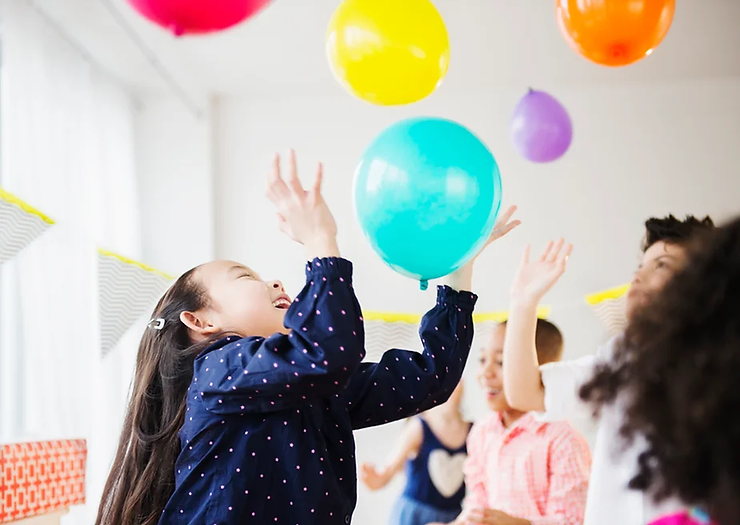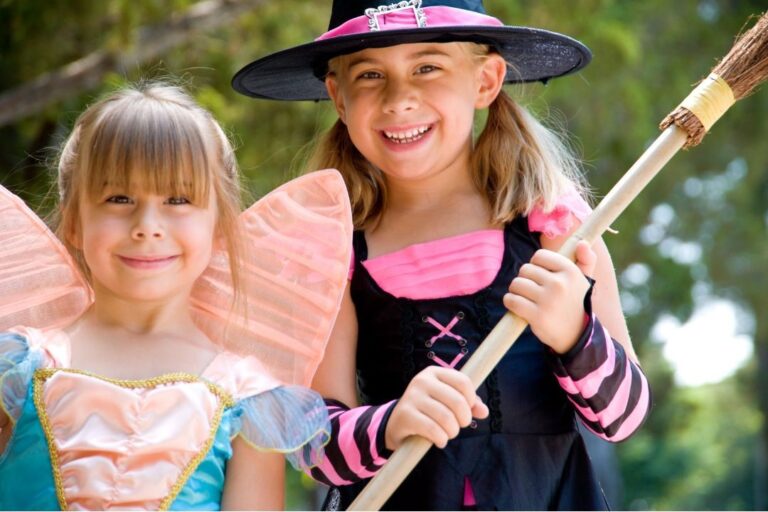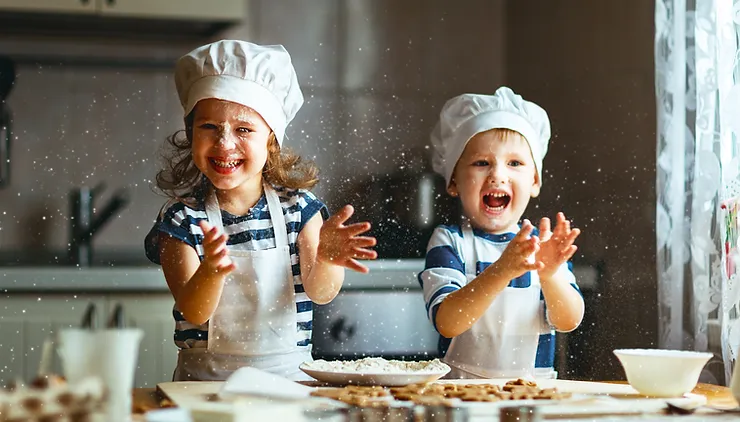The Best Home Activities for Occupational Therapy

This post may contain affiliate links and I could earn a small commission at no cost to you. However, I will never recommend anything that I do not believe in or use myself. You can read more about my disclosure policy here.
In the colorful world of occupational therapy, my child discovered a captivating realm of play therapy that ignited his imagination. It was a fantastic experience with a ton of unique games and activities, each one meticulously designed to captivate his attention.
The joy he found in learning during these sessions was like nothing we had seen before. Occupational therapy quickly became his absolute favorite, and it’s no wonder why – he had a blast while learning and growing at the same time. We were thrilled to see how much he had flourished on his therapy journey.
Occupational therapy is an invaluable intervention for young autistic children. It focuses on supporting their development, enhancing their skills, and promoting overall well-being.
Play therapy, a prominent approach within occupational therapy, recognizes the significance of play in a child’s development as a means for self-expression, skill development, and understanding their surroundings.
Beyond therapy sessions, parents can play a crucial role in fostering their child’s growth by engaging in various activities with occupational therapy benefits at home.
Keep reading for a list of 10 fun activities that parents can enjoy with their children at home, all of which have the potential to provide numerous occupational therapy benefits. These activities not only promote skill development, but also create meaningful opportunities for bonding, learning, and exploration.
What is Occupational Therapy?
Occupational therapy is a specialized field that focuses on helping individuals, including young children, to improve their daily life skills and reach their full potential.
For young autistic children, occupational therapy activities are tailored to address their unique challenges and strengths.
It encompasses a holistic approach, considering various aspects of development, such as sensory processing, fine motor skills, social interaction, self-regulation, and play skills.
What is Play Therapy?
Play therapy is a therapeutic approach that utilizes play as a medium for communication, exploration, and growth.
It recognizes play as an essential part of a child’s development, allowing them to express themselves, develop skills, and make sense of the world around them.
In the context of occupational therapy for young autistic children, play therapy provides a structured and supportive environment where children can engage in purposeful play activities to work on specific goals.
Related: The Best Board Games for Occupational Therapy
10 Fun Activities with Occupational Therapy Benefits
Check out our list of 10 fun activities with occupational therapy benefits that parents can enjoy with their children at home.
1. Play-Doh Shapes and Letter Tracing
Set up a creative workspace with Play-Doh, cookie cutters, a rolling pin, and letter flashcards or printed letters. Encourage the child to roll out the Play-Doh using the rolling pin, cut out shapes with the cookie cutters, and explore different colors and textures. As they enjoy the sensory play, introduce the letter flashcards or printed letters and guide the child to roll out the Play-Doh and trace the letters with their fingers.
This engaging activity enhances fine motor skills, hand strength, creativity, letter recognition, and visual-motor integration. The child will have the opportunity to develop their fine motor control and coordination while simultaneously reinforcing their knowledge of shapes and letters. It provides a fun and multisensory experience that combines artistic expression, tactile exploration, and early literacy skills.
Play-Doh Shape and Learn
2. Animal Walks
Embark on an exciting adventure with Animal Walks as you introduce the child to a variety of captivating movements inspired by different animals. Demonstrate each animal walk, such as the powerful bear crawl, the energetic frog jump, the sideways scuttle of a crab, or the mesmerizing slither of a snake. Encourage the child to mimic these movements, engaging their imagination and embodying the essence of each creature.
As they crawl like a bear, jump and squat like a frog, scuttle sideways like a crab, or slither on their belly like a snake, the child refines their gross motor skills, coordination, balance, body awareness, and strength. By exploring diverse movement patterns, they enhance their kinesthetic awareness and learn to control their bodies in various ways.
Additionally, these animal walks provide valuable proprioceptive input, allowing the child to receive sensory feedback and aiding in self-regulation and sensory integration. The Animal Walks activity combines physical exercise, imaginative play, and sensory exploration to create a dynamic and engaging experience for the child’s overall development.
3. Obstacle Course
Create an engaging and dynamic obstacle course either indoors or outdoors using items like pillows, hula hoops, stepping stones and cones. Arrange these objects strategically to provide ample opportunities for the child to crawl under, jump over, walk along, and navigate around various obstacles.
To add an extra element of excitement, introduce a puzzle component to the course. Have the child start by grabbing a puzzle piece at the beginning of the course and challenge them to carry it all the way to the puzzle board placed at the end of the course. Repeat the obstacle course until all the puzzle pieces are successfully placed on the board. Opt for a simple puzzle with only a few pieces to ensure a manageable challenge.
This engaging activity promotes gross motor skills, coordination, balance, spatial awareness, and problem-solving abilities. The child will actively plan their movements, strategize to overcome obstacles, and navigate through the course while simultaneously developing their cognitive and motor skills.
GONGE River Stones
4. Sensory Bin
Create an engaging and fun sensory table by filling a plastic bin with a variety of sensory materials, such as sand, beans, or even water with floating objects. Enhance the sensory experience by adding small toys, scoops, and containers for exploration. Encourage the child to engage in sensory play by scooping, pouring, burying, or searching for objects within the bin.
This activity provides a rich sensory environment that promotes sensory exploration, tactile discrimination, fine motor skills, and hand-eye coordination. The child will have the opportunity to experience different textures, weights, and sensations, stimulating their sensory processing and encouraging imaginative play.
They can feel the grains of rice or beans running through their fingers, experiment with pouring and filling containers, and bury and uncover hidden objects, fostering their sensory integration and cognitive development. This sensory table offers a hands-on and enjoyable way for the child to engage their senses, stimulate their curiosity, and encourage exploration and creativity.
Creativity for Kids Sensory Bin
Related: How to Create an Awesome Ocean Themed Sensory Bin
5. Balloon Volleyball
Prepare a lively game of Balloon Volleyball by ensuring a safe playing area and inflating a balloon to a suitable size. Create boundaries using tape or designate a specific space for the game. Instruct the child to use their hands or other body parts to hit the balloon back and forth over the designated boundaries.
This engaging activity serves to promote hand-eye coordination, gross motor skills, visual tracking, and social interaction. Additionally, it fosters important social skills such as turn-taking, cooperation, and following simple rules.
The lightweight nature and slow movements of the balloon make it an ideal choice for developing these skills in a controlled and enjoyable manner. The child will delight in the challenge of keeping the balloon in the air and coordinating their movements to interact with the floating object, thereby improving their motor skills, coordination, and social interactions.
6. Bubble Wrap Stomp
Transform the play area into a delightful Bubble Wrap Stomp adventure by carefully laying out a large sheet of bubble wrap on the floor and securing it with tape if necessary. Excite the child’s imagination and instruct them to engage in the exhilarating act of stomping on the bubble wrap, encouraging them to make satisfying popping sounds.
This engaging activity provides valuable sensory feedback, promotes body awareness, and offers a release for pent-up energy. Moreover, it actively supports bilateral coordination, balance, and the coordination of movements as the child joyfully participates in gross motor movements, jumping, and stomping on the bubble wrap.
The stimulating popping sounds can be particularly captivating for sensory-seeking children, providing a rewarding sensory experience and offering an outlet for sensory input and self-regulation. The Bubble Wrap Stomp guarantees a playful and sensory-rich experience that combines fun, sensory exploration, and the opportunity to engage in gross motor movements.
Related: Ultimate Toy Guide: 30 Best Sensory Toys for Autistic Children
7. Bean Bag or Ring Toss
Prepare an engaging bean bag or ring toss game by setting up a target area using cones, buckets, or even laundry baskets positioned at varying distances. Provide the child with bean bags or rings for throwing. Clearly designate a throwing line from which the child will toss the bean bags or rings towards the targets.
This interactive activity serves to promote and refine crucial skills such as hand-eye coordination, visual tracking, and bilateral coordination. Additionally, it aids in the development of gross motor skills, spatial awareness, and motor planning.
As the child aims for the different targets, they learn to adjust their throwing strength and accuracy, honing their motor control and concentration. The Bean Bag or Ring Toss game offers an enjoyable opportunity for the child to engage in physical activity while simultaneously developing essential skills necessary for their overall motor and cognitive development.
3 in 1 Carnival Outdoor Games Combo Set
8. Putty Treasure Hunt
Embark on an exciting Putty Treasure Hunt by preparing a lump of pliable play putty and a collection of small beads or objects. Conceal these treasures within the putty, ensuring they are fully covered and hidden from view.
Encourage the child to embark on a sensory adventure as they use their fingers to navigate through the putty, employing tactile exploration and fine motor skills to extract the hidden gems. By squishing, squeezing, and manipulating the putty, the child unravels the mystery and reveals the hidden objects within.
This captivating activity serves as a conduit for the development of fine motor skills, finger strength, and tactile perception. Furthermore, it promotes sensory processing as the child engages their senses to locate the concealed items. Hand-eye coordination is honed as they visually track and manipulate the putty, while the utilization of the pincer grasp during object retrieval reinforces precision and dexterity.
The Putty Treasure Hunt offers a delightful and stimulating sensory experience, fostering the child’s curiosity, tactile discrimination, and fine motor control.
Inner-Active Play Putty
9. Scissor Skills
Transform a designated area into a safe cutting zone by providing child-safe scissors and construction paper or scissor skills activity paper. Begin by guiding the child in mastering the proper scissor grip and technique for cutting along both straight and wavy lines. Encourage them to explore their cutting skills further by attempting to cut out simple shapes, lines, or snipping small pieces of paper.
This engaging activity serves as a catalyst for developing essential fine motor skills, hand-eye coordination, bilateral coordination, and the mastery of cutting abilities. Furthermore, it fosters the child’s focus, concentration, and hand strength as they manipulate the scissors and paper, promoting both precision and control. Through the practice of scissor skills, children enhance their dexterity, hand control, and visual-motor integration, setting the stage for further artistic and academic pursuits.
Scissor Skills Activity Book
10. Sticker Collage
Embark on an exciting Sticker Collage adventure by offering the child a sheet of paper or a large poster board, along with a diverse selection of stickers. Encourage them to unleash their creativity by placing the stickers on the paper in any desired pattern or design.
This captivating activity serves as a catalyst for the development of fine motor skills, hand-eye coordination, creativity, and self-expression. As the child engages in the process of peeling and placing stickers, their pincer grasp and finger dexterity are honed and refined.
Simultaneously, their imagination is sparked, and artistic skills are nurtured as they design and arrange the stickers to bring their unique collage to life. This activity provides a delightful outlet for self-expression and encourages the child to explore their artistic abilities while simultaneously fostering their fine motor control and creative thinking.
Stickers for Kids
Final Thoughts
Engaging in activities with occupational therapy benefits at home can have a profound impact on a child’s development and well-being. The 10 activities provided offer parents a valuable opportunity to continue the therapeutic journey outside of formal therapy sessions.
By incorporating these activities into daily routines, parents can support their child’s fine motor skills, sensory processing, social interaction, and cognitive abilities. Furthermore, these activities foster a nurturing environment for bonding and connection between parents and children.
Remember, each child is unique, so feel free to adapt the activities to suit your child’s interests and abilities. With love, patience, and a sense of playfulness, parents can provide their child with a rich and supportive environment that promotes growth, confidence, and joy.
Recommended
- The Best Board Games for Occupational Therapy
- Why Sensory Play Is Important For Child Development
- 11 Best Tips For Potty Training An Autistic Child
- 25 Ways Life Looks Different Parenting an Autistic Child






